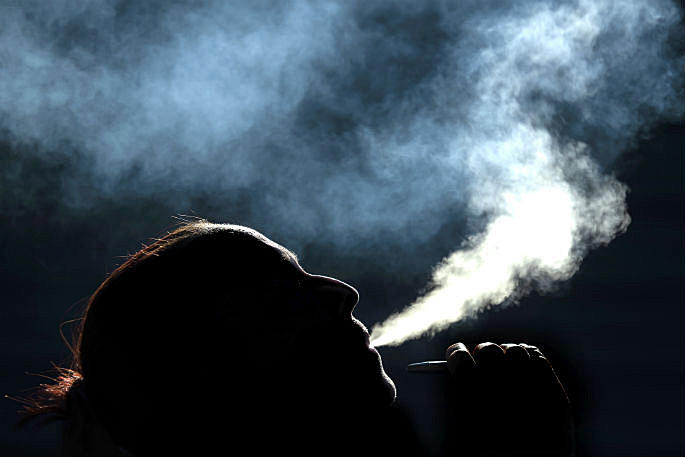The 2024 ASH Year 10 Survey of young people’s smoking and vaping behaviour and attitudes has shown that regular vaping rates have continued to fall for the third year in a row.
The survey of more than 30,000 students found that 14.1 per cent of 14-15 year olds reported vaping at least once a month compared to a peak of 20.2 per cent in 2021, daily vaping also fell to 8.7 per cent after being at 10 per cent since 2021.
“We are pleased to see a third consecutive year of decline in regular vaping by year 10 students," ASH Director Ben Youdan said.
"This year-on-year decline follows a period between 2015 and 2020 when there was a rapid increase in youth vaping. During this time there were no laws regulating vapes. However, this trend appears to be reversing since new laws were put into place.”
Meanwhile daily smoking remains at only 1.2% of students this year. This result coincides with the recent NZ Health Survey which showed smoking rates at 3% for 15-24-year-olds, suggesting that low rates are being sustained into young adulthood.
“Youth smoking has almost been eliminated in the last decade. In effect, we have a smokefree generation, which is a cause for celebration,” Youdan said.
Regular (at least monthly) and daily vaping have declined for all ethnic groups, although inequalities remain. Regular vaping for Pākehā students fell one-third from 18.2% in 2021 to 11.2% in 2024. Regular vaping peaked among Māori students at 35.6% in 2021 and is now around 29.4%.
“It remains a concern that young Māori are almost three times as likely to vape than Pākehā students. Over the next few months, we hope to release more insights into youth vaping that can help better understand students' experiences and inform a more focused approach based on evidence.”
The ASH Year 10 Survey is the biggest and most representative of young people’s smoking and vaping behaviour in New Zealand.
The results come as the coalition government has a Bill before Parliament to ban disposable vapes, reduce the visibility of vapes, and increase fines for selling to minors.
“ASH supports these measures to reduce further the appeal of vaping to young people and penalise unscrupulous sellers," Youdan said.
"However, we are still missing evidence-based programmes that give young people the skills to navigate a world where vaping exists. This is even more important when we see the huge role vaping has played in getting tens of thousands of adults off cigarettes and reducing the horrendous toll of smoked tobacco.”
Youdan said vaping is "absolutely not for young people or never smokers, and is certainly not risk free".
"The good news is that youth vaping appears to be declining, but we still need to put much more into prevention, and supporting young vapers to quit if we want to undo the rapid rise that happened in the absence of any meaningful regulation prior to 2021”.
Results for student smoking and vaping can be found on the ASH website.
About the Survey
The Year 10 survey was founded by ASH in 1992, and became an annual survey from 1999. Since then, over 720,000 students have participated.
The survey has asked about vaping since 2014. More than 270,000 students have answered questions on vaping behaviours since 2014.
The survey uses validated questions on vaping and smoking with oversight from an expert advisory group.
In 2024, the survey was available in English and Te Reo Māori.
The survey methodology can be found here.
The survey is funded by a grant from Te Whatu Ora, Health New Zealand. ASH has been fully funded for the survey since 2021. Prior to this it was co-funded with the Health Promotion Agency, and the former Health Sponsorship Council beginning in1999.
ASH, an independent NGO, does not receive any funding from the tobacco industry or its affiliates, the vape industry, or pharmaceutical companies. We do not accept or receive funds from alcohol or gaming trusts.
Vaping facts
Vaping uses an electronic device that can deliver nicotine by heating a liquid and turning it into an inhaled aerosol (vapour) made of propylene glycol vapour, glycerin, and flavourings.
Smoking involves inhaling smoke from burning tobacco products to access nicotine; it is the thousands of chemicals, including many carcinogens, in the inhaled toxic smoke that cause harm, not the nicotine, which is a relatively harmless product although it can cause dependence.
Resources
Smoking: If you are concerned about smoking rates at your school, The Smokefree schools website has tools and resources for education settings. https://www.smokefree.org.nz/smokefree-environments/smokefree-at-school
Te Whatu Ora Health New Zealand has resources on vaping and young people designed by rangatahi and their whānau. www.protectyourbreath.co.nz/
www.vapingfacts.health.nz Ministry of Health website has information about vaping and smoking in New Zealand for people looking to quit smoking and people who support them.



0 comments
Leave a Comment
You must be logged in to make a comment.